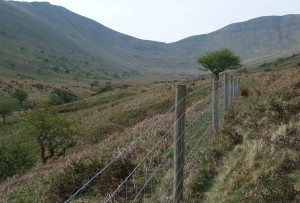Support us from £3/month
We deal with almost 1000 cases a year assisting communities, groups and individuals in protecting their local spaces and paths in all parts of England and Wales. Can you help us by joining as a member?
We have responded to the Welsh Assembly Government’s consultation on A Living Wales—a new framework for our environment, our countryside and seas, by calling on it to recognise the importance of common land to the nation.
Says Kate Ashbrook, our general secretary: ‘Common land covers over eight per cent of the land area of Wales. It is immensely important for its landscape, wildlife habitats, archaeology and public access and recreation. No other land type provides such a range of public benefits.
‘The Welsh Assembly Government(WAG) is consulting on how to take an integrated approach to the management of the environment. We have said that common land provides a model.
‘We have urged WAG to implement the Commons Act 2006. It is shameful that, four years after the Act received royal assent, the vast majority of its provisions still haven’t been introduced in Wales. It allows for correction of the common land registers, the establishment of commons councils to secure good management of the land, and an improved consent-process for works on common land.
‘We have also urged WAG to apply Glastir, the agri-environment scheme, to commons so that common owners and rightholders can be paid for sympathetic management of the land in the public interest.
‘For instance, the Department for Environment, Food and Rural Affairs erected ugly fences in the Brecon Beacons National Park, during the 2001 foot and mouth outbreak. Defra only had temporary consent; the fences should have been removed five years ago and now they are unlawful. But they remain because there is no funding yet available for commoners to employ shepherds or to adopt other means of managing their stock in ways which are consistent with the landscape and public access. We are calling for the removal of these unsightly fences which restrict public access.
‘Where the management of commons works well, it provides a valuable model for the environment in general. The commons support a wide range of interests, all of whom must be consulted and involved in plans for the future management. If that is done, the commons subsist for the common benefit. There are lessons here for the management of the Welsh environment as a whole,’ Kate concludes.

